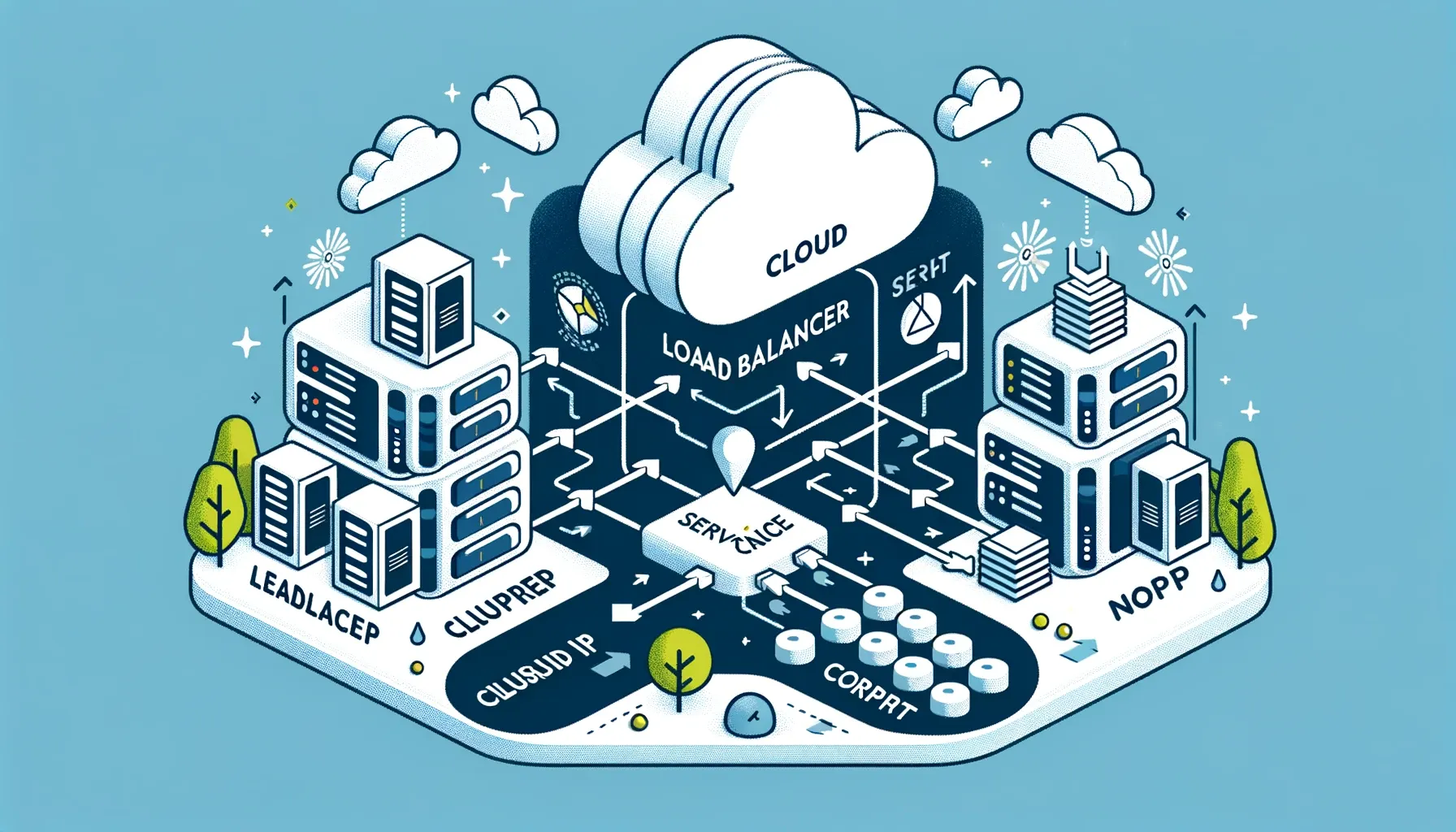
Understanding Kubernetes service access types has been tough for me. It felt confusing and overwhelming at times. So, I decided to write this article to help others who might feel the same way. My goal is to break down these concepts into simpler terms. I hope to make it easier for you to get a handle on how to use these services in your own projects. Let's dive into the three main types of Kubernetes services: ClusterIP, NodePort, and LoadBalancer, providing insights into their use cases, advantages, and limitations.
ClusterIP: Internal Service Access
Overview
ClusterIP is the default Kubernetes service type, making it a fundamental concept for new Kubernetes users to grasp. It assigns a unique IP address to the service within the cluster, enabling pod-to-pod communication. This IP address is reachable only from within the cluster, making ClusterIP services an excellent choice for internal communication between different services in your application.
Use Cases
ClusterIP services are ideal for scenarios where you do not need external traffic to reach your application components. Examples include backend services like databases or internal APIs that should only be accessible to other components within the same Kubernetes cluster.
Advantages
- Isolation and Security: Since ClusterIP services are only accessible within the cluster, they offer an additional layer of security by isolating internal network traffic from external access.
- Simplicity: Being the default service type, ClusterIP services are straightforward to set up, requiring minimal configuration.
Limitations
- Internal Access Only: The major limitation of ClusterIP is that it cannot be accessed from outside the Kubernetes cluster, making it unsuitable for services that need to be exposed to the internet or external networks.
NodePort: External Access via Nodes
Overview
NodePort is a type of Kubernetes service that makes your service accessible from outside the Kubernetes cluster by opening a specific port on all nodes (VMs or physical servers) of the cluster. Traffic that is sent to this port is forwarded to the service. The NodePort service type extends the functionality of ClusterIP by adding a layer that allows external access.
Use Cases
NodePort services are useful when you need external access to your application but do not have a LoadBalancer available or for testing purposes. They are also helpful in environments where direct access to each node is possible.
Advantages
- External Access: NodePort services allow external clients to access services running inside the Kubernetes cluster, offering a straightforward method to expose your application to the outside world.
- Flexibility: They provide a simple way to access services from outside the Kubernetes cluster, especially in environments where a LoadBalancer might not be available or necessary.
Limitations
- Port Management: Since NodePort services require opening a specific port across all nodes, managing these ports and avoiding conflicts can become challenging as the number of services grows.
- Scalability: Directly exposing services through NodePort can lead to scalability issues, as it bypasses the more sophisticated load balancing capabilities of a LoadBalancer service.
LoadBalancer: Cloud-Provider Integration for Scalability
Overview
The LoadBalancer service type integrates Kubernetes with the cloud provider's load balancer, allowing for automatic creation and management of an external load balancer. This load balancer distributes external traffic to the Kubernetes services, offering a seamless way to expose services to the internet.
Use Cases
LoadBalancer services are ideal for production environments where you need to expose your application to the internet reliably and scalably. They are commonly used for front-end web applications, APIs, or any service that requires robust, scalable external access.
Advantages
- Scalability and Reliability: LoadBalancer services leverage the scalability and reliability of cloud provider platforms, providing a high level of availability for your applications.
- Simplicity: The process of exposing a service to the external internet is simplified, as the cloud provider automatically handles the creation and configuration of the load balancer.
Limitations
- Cost: Utilizing LoadBalancer services can incur additional costs, as cloud providers charge for the load balancing resources that are provisioned. Usually to avoid greater costs you will create a LoadBalancer service for the ingress only, then the ingress (like Traefik or Nginx) provides cluster smart routing.
- Cloud-Dependent: This service type is dependent on the cloud provider's infrastructure, making it less suitable for on-premises or bare-metal environments.
Conclusion
Understanding the differences between ClusterIP, NodePort, and LoadBalancer services in Kubernetes is crucial for architects and developers looking to efficiently design and deploy applications. Each service type offers unique advantages and is suited to different use cases, from internal cluster communication to exposing applications to the external world. By leveraging these services intelligently, you can ensure that your applications are scalable, secure, and accessible according to your needs.
